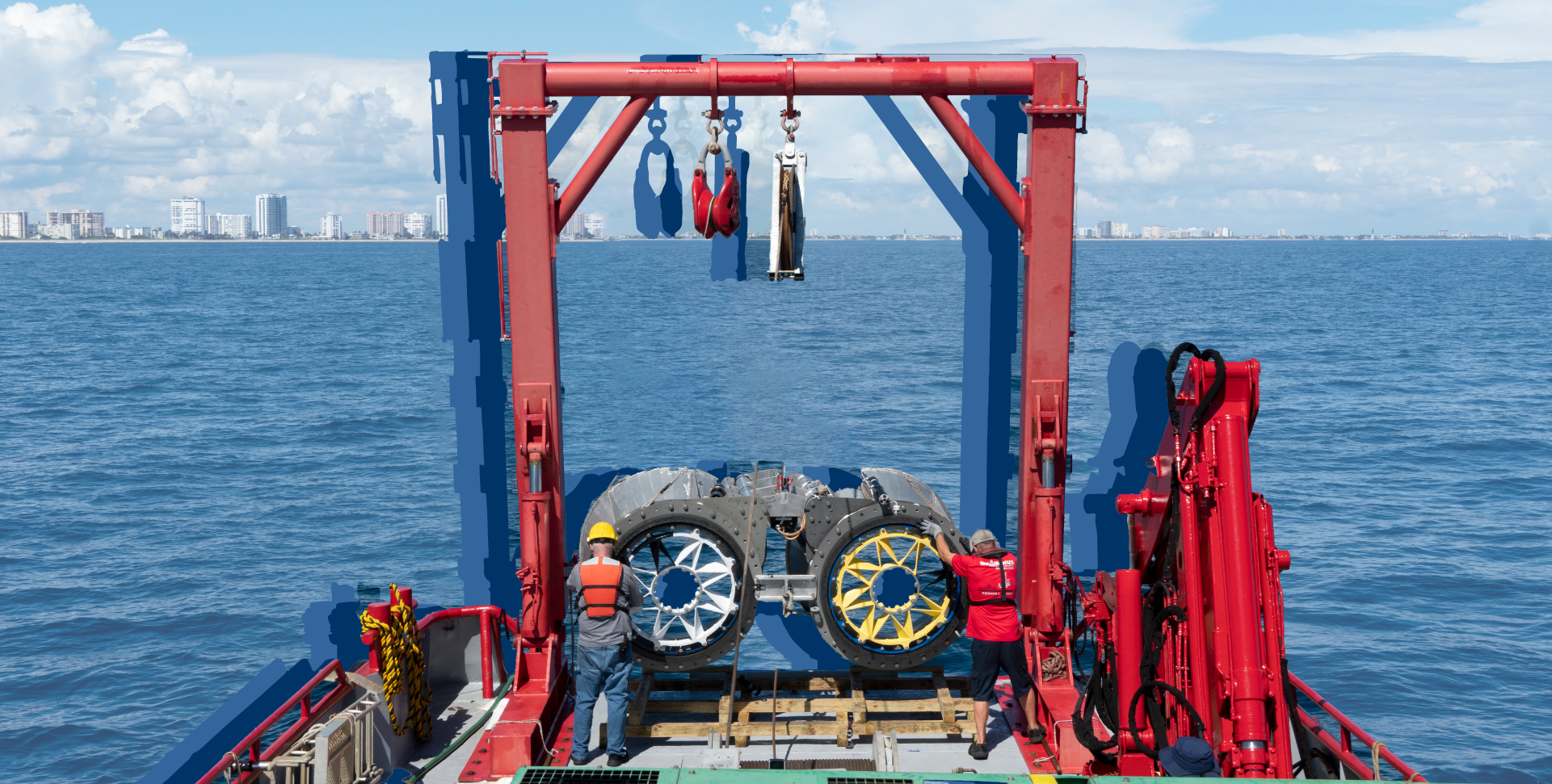While most people are familiar with solar or wind power, there’s another promising renewable energy that harnesses ocean currents — underwater turbines. Developing and testing that technology to help bring power from these currents to our communities is the goal of FAU’s Southeast National Marine Renewable Energy Center (SNMREC), said Gabriel Alsenas, director of SNMREC.
For their latest endeavor, the center envisions a $100 million project to develop a world’s first ocean current turbine development and testing site off Lake Worth Beach, with a connection to the city’s power grid. “This is our vision for the next five to 10 years that we're starting to build out,” Alsenas said.
Known as hydrokinetic energy, the power of currents, waves and tides is an untapped source of potential carbon-free electricity in the U.S. And, here in South Florida, that source is the mighty Gulf Stream, the warm water current that originates in the Atlantic Ocean, loops through the Gulf of Mexico, and flows north along eastern coastlines at eight billion gallons per second.
SNMREC is one of only three centers designated by the U.S. Department of Energy to assist companies with the responsible development of marine renewables. Compared to Europe, the leader in tidal turbine technology, the U.S. has been slower in developing turbines. “Because of our regulatory regime here, our pace has been slower, but it's been more measured, and we’re catching up,” Alsenas said. Their team has worked with FAU wildlife scientists to study how animals might interact with a future turbine array, he said.
In 2020, the center achieved a renewable energy first. They partnered with a project development company to successfully test a local technologist’s prototype in the middle of the Gulf Stream, producing power in the water for a continuous 24 hours. “But demonstrating 24/7 power production is just one step in the process,” Alsenas said. The next step is to drag larger scale turbines behind large ships at controlled speeds, called tow-testing, then leaving the turbines in the water to run on their own and eventually, connecting them to shore with an electrical grid.
Trained as an ocean engineer, Alsenas emphasized the need for testing. “Murphy lives out there,” he said (referencing Murphy’s Law). “So, a phased approach to developing these technologies is the best way to reduce risk for our commercial partners and help them achieve full scale sooner.” ⬥




